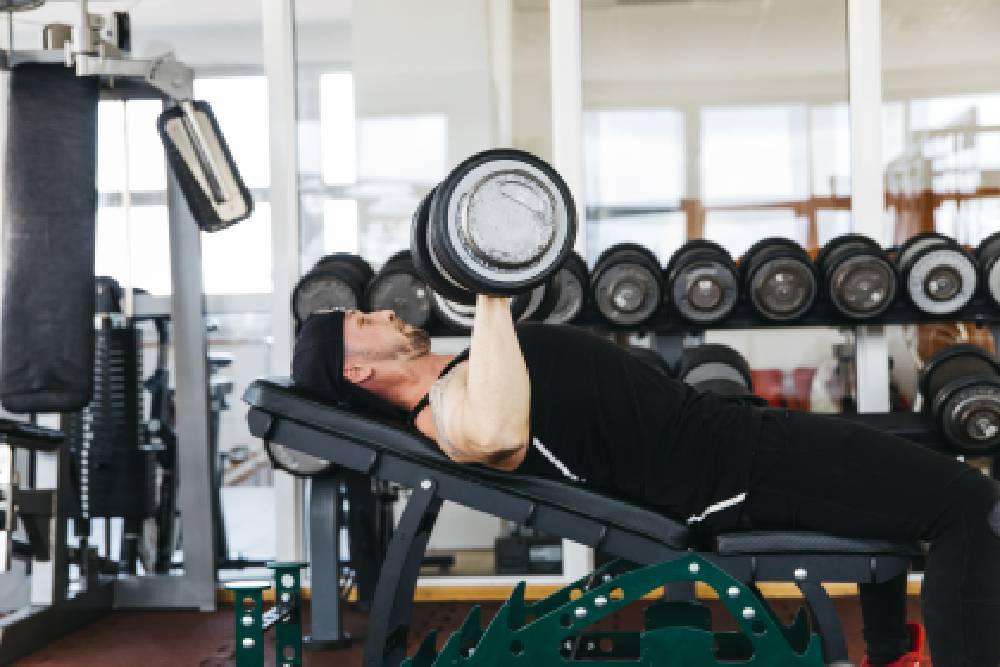Poor Form and Technique:
One of the biggest mistakes weightlifters make is sacrificing proper form and technique in pursuit of heavier weights or more repetitions. Poor form not only limits the effectiveness of the exercise but also increases the risk of injury. To avoid this mistake, prioritize learning and mastering the correct form for each exercise. Start with lighter weights, focus on proper technique, and gradually increase the weight as you become more comfortable and confident.
Lifting Too Much Weight Too Soon:
Another common mistake is attempting to lift heavy weights beyond your current strength level. It’s important to gradually progress and challenge yourself, but it should be done in a controlled manner. Start with a weight that allows you to maintain proper form and complete the desired number of repetitions. As your strength improves, gradually increase the weight in small increments to continue challenging your muscles safely.
Neglecting Warm-Up and Cool-Down:
Many weightlifters make the mistake of skipping warm-up and cool-down exercises. Warm-up exercises prepare your body for the upcoming workout by increasing blood flow, loosening up joints, and activating the muscles you’ll be targeting. Cooling down helps to lower your heart rate, stretch and relax muscles, and aid in the recovery process. Dedicate time to perform dynamic stretches, mobility exercises, and light cardio as part of your warm-up, and incorporate static stretches and foam rolling in your cool-down routine.
Overtraining:
Training too frequently without allowing sufficient time for recovery is a common mistake in weightlifting. Your muscles need time to repair and rebuild after intense workouts. Failing to give your body adequate rest can lead to decreased performance, increased risk of injury, and hindered progress. Ensure you have rest days in your training schedule and listen to your body’s signals. If you’re experiencing excessive fatigue, persistent muscle soreness, or lack of progress, it may be a sign that you need more rest.
Neglecting the Importance of Nutrition:
Proper nutrition is vital for supporting your weightlifting goals. Failing to fuel your body with adequate nutrients can hinder your progress and recovery. Ensure you’re consuming enough calories, macronutrients (protein, carbohydrates, and fats), and micronutrients to support muscle growth and overall health. Prioritize lean protein sources, whole grains, fruits, vegetables, and healthy fats in your diet. Consider consulting a registered dietitian or nutritionist to develop a nutrition plan that aligns with your weightlifting goals.
Lack of Variety in Training:
Repeating the same exercises and routines without incorporating variety can lead to stagnation and plateaus. Your body adapts to repetitive stimuli, so it’s important to introduce new exercises, variations, or training methods to continuously challenge your muscles. Incorporate different exercises, change the order of your workouts, or try new equipment to keep your workouts fresh and engaging.
Poor Breathing Technique:
Breathing plays a crucial role in weightlifting. Improper breathing can compromise your performance and stability. Many weightlifters tend to hold their breath during the exertion phase of a lift, which can increase blood pressure and limit oxygen supply to the muscles. Practice proper breathing techniques, such as inhaling during the eccentric phase (lowering the weight) and exhaling during the concentric phase (lifting the weight), to optimize performance and maintain stability.
Not Seeking Professional Guidance:
Attempting weightlifting without proper guidance or instruction can lead to mistakes and injuries. Consider working with a qualified strength and conditioning coach or personal trainer, especially if you’re new to weightlifting. They can teach you proper technique, provide guidance on programming, and ensure you’re progressing safely and effectively.
In conclusion, being aware of common weightlifting mistakes and taking steps to avoid them is crucial for a safe and effective training experience. Focus on proper form and technique, gradually increase the weight, prioritize warm-up and cool-down exercises, allow for sufficient rest and recovery, fuel your body with proper nutrition, introduce variety in your training, practice proper breathing techniques, and seek professional guidance when needed. By avoiding these common mistakes, you can maximize the benefits of weightlifting while minimizing the risks.




